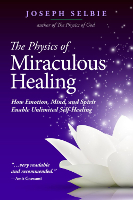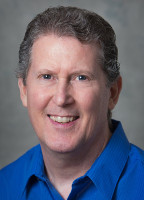
In this Article:
- Amazing placebo effects that demonstrate the power of belief.
- Can belief alone heal physical ailments?
- How mind over matter manifests in healing outcomes.
- What multiple-personality disorder tell us about rapid physiological changes.
- How positive or negative beliefs affect health outcomes more than we realize.
Mind over Matter: Instant Healings with Placebos and MVPs
by Joseph Selbie.
There is a surprising amount of evidence that indicates that our beliefs are far more powerful than molecules. Deeply held beliefs that we are likely to get cancer will make the subtle energy body a hologram template for cancer. When this happens, instead of the Intelligently guided subtle energy coordinating and executing all life-processes to produce good health, our Intelligently guided subtle energy coordinates and executes all life-processes to make our body have cancer.
The Placebo Effect
I wouldn’t be surprised if you are finding it hard to accept the degree to which our beliefs have such power. Let’s begin with the placebo effect, a phenomenon whose familiarity hides its astonishing power: People who have a belief in the potential of a drug to heal them, heal just as readily when given a placebo as when given the actual drug.
Think about that for a moment.
Don’t be confused by the usual statistics surrounding placebo testing results—such as, “53% of placebo users responded as well as those who received the actual drug.” A 53% positive response rate means that for 53% of the recipients of the placebo it was one hundred percent as effective as the real drug or treatment. Nor is the positive effect of the placebo minor or temporary. It can cure people of anything that drugs, treatment, or surgery can—including cancer!
In 1968, researchers Luparello and Bleeker conducted a medical trial for asthma inhalers. Forty asthma sufferers were given inhalers which they were told contained an irritant. In fact, the inhalers contained nothing but water vapor. Nonetheless, after using the inhaler, almost half of the test group experienced restriction of their airways and about thirty percent suffered full asthmatic attacks.
The researchers then gave each asthma sufferer a new inhaler, which they were told contained a medicine that could relieve their symptoms. These inhalers, too, contained nothing but water vapor. Nonetheless, every one of the approximately twenty asthma sufferers that reacted to the nonexistent irritant recovered after inhaling the water-vapor placebo that they believed contained the drug being trialed.
Dr. Bruce Moseley and his team at the Baylor School of Medicine conducted a study of one hundred and eighty patients with severe, debilitating knee pain. The patients were divided into three groups: one to receive debridement—shaving damaged tissue inside the knee joint; a second to receive lavage—flushing irritants out of the knee joint; and the third was the placebo group—they were treated just as were the others (sedated, incised, and sutured), but none received debridement or lavage.
All three groups were given the same postoperative care and given the same recommended exercises to help with recovery. After twenty-four months the percentage of positive outcomes was the same for all three groups.
Belief in Good and Bad Effects
Placebo recipients also often experience the expected negative side-effects of the drug being trialed. In 1976, a randomized, controlled study of a potential chemotherapy treatment for gastric cancer was conducted by the British stomach cancer group. The results of the study were published in the May 1983 World Journal of Surgery.
Four hundred and eleven patients participated in a double-blind study that involved the use of placebos. During the course of the several month’s long study, thirty percent of the patients who were given the placebo/saline drip treatment not only saw improvement in their cancer but also lost all their hair.
Nor is it only in placebo testing that we can see the power of people’s beliefs regarding drugs. An experiment was conducted in which ten men were put in a hospital ward for the night. All the men were told that they were being given a sleeping pill. Nine of the men were given a sleeping pill. Unknown to the tenth man, however, he was given a stimulant rather than a sleeping pill. Nonetheless, the man given the stimulant slept through the night with the other nine men.
The reverse experiment was also conducted. All ten men were told that they were being given a stimulant. Nine of the men were given a stimulant. Unknown to the tenth man, however, he was given a sleeping pill rather than a stimulant. Nonetheless, the man given the sleeping pill stayed awake all night with the other nine men.
Rapid Physical Change: Multiple-Personality Sufferers
Because our beliefs about our body, health, and health treatments usually change slowly, if at all, during a lifetime, we are generally not aware of how much beliefs influence our health and fundamental physiology. Multiple-personality disorder (MPD) sufferers, however, do experience sudden physiological changes; changes that emerge almost instantly when one personality transitions to another.
Dr. Philip M. Coons compiled the results of over fifty studies regarding physiological changes among MPD sufferers. He noted that these changes were measured by modern medical devices and techniques. The measurements taken using instruments as well as systematic observational methods leave no doubt that physiological changes emerge or vanish when one MPD personality transitions to another.
One MPD sufferer manifested needle tracks on his arms only when the personality emerged that believed he was a drug addict—even though no drugs had been injected. Rashes, moles, scars, and other skin conditions emerge and vanish as personalities come and go. A personality reacted to poison ivy; fluid-filled blisters appeared on his skin. On switching to another personality, within minutes the blisters vanished.
One personality can suffer from allergies—bee sting toxin as an example—while the individual’s other personalities do not. One personality can be diabetic, while the others are not. Each MPD personality can have different visual characteristics.
Who You Believe You Are...
MPD sufferers have been measured carefully by ophthalmologists. In one study, a single MPD sufferer moved through ten personalities in less than an hour. An ophthalmologist was on hand to do a complete set of measurements for each personality.
Once the results were examined it was found that the eyes of each of the ten personalities had visual characteristics significantly different from those of the other nine. These are not the normal physiological changes that anyone’s eyes might go through over time from, for example, eyestrain or aging. It is as though the eyes of each personality belong to an entirely different body.
In other studies, some personalities are colorblind for blue and green while the others are not. One personality has an astigmatism while the others do not. Even the color of the iris of one personality is different from the colors of the irises of the other personalities.
Voice spectral-analysis reveals one’s unique voice fingerprint known as a voiceprint. Even exceptional mimics, who can sound convincingly like many well-known people, cannot fool voice spectral-analysis; their underlying voiceprint remains unchanged regardless of the imitation they are performing, just as an actor playing many parts always has the same fingerprints. MPD personalities can, however, have a unique voiceprint for each personality.
According to the laws of the molecular-machine body, our genes determine the physical structures that give rise to our unique voiceprint thus for each MPD personality to have its own unique voiceprint, each MPD personality would have to be manifesting a unique gene expression—perhaps even unique genes. Although handedness is believed to be genetically determined, MPD personalities have been observed to write with different hands i.e., the left or the right.
One Personality is Blind, The Other Sees
To me the most astonishing example of extraordinarily rapid physiological changes among MPD sufferers is the 1992 case of a blind woman with ten MPD personalities in treatment with psychotherapist Dr. Bruno Waldvogel. Her blindness was confirmed through visually evoked potential (VEP) tests. When given an evoked potential, such as a bright flash of light in her eyes, no brain activity was detected in her visual cortex—something that simply can’t be faked. She was blind.
As her treatment with Dr. Waldvogel progressed, the woman was able to see to varying degrees depending on which of the nine sighted personalities was active—and in the next minute, when the tenth and fully blind personality emerged, she was completely physiologically blind.
How can these sudden changes occur? They occur because all the personalities of a MPD sufferer have absolute belief in their individual psychological, emotional, and physical identities. In the moments of transition from one personality to another the new personality’s beliefs reshape the hologram template-subtle energy body and the holographically projected physical body instantly reshapes to match those new beliefs.
The Power of Belief: We Must Believe In Order To See
Science teaches that we must see in order to believe, but we must also believe in order to see. We must be receptive to possibilities that science has not yet grasped, or we will miss them.—Dr. Bernie Siegel, author of Love Medicine, and Miracles
The power of belief is perhaps no more clearly demonstrated than in the case of Mr. Wright, a cancer sufferer who had developed a deep belief that Krebiozen would heal him. The moment he received a dose of Krebiozen, his Intelligently guided subtle energy began to remake his physical body, redirecting myriad life-processes, perhaps even instantly holographically projecting new atoms, molecules, and cells, eliminating all effects of cancer, his tumors melting away “like snowballs on a hot stove.”
When Mr. Wright’s conviction was subsequently shaken about the efficacy of Krebiozen, his Intelligently guided subtle energy obligingly remade his body to be once again full of cancer, tumors included. When his conviction about Krebiozen was again strengthened by his doctor, who gave Mr. Wright a placebo that he assured him was an even more effective version of Krebiozen, yet again his Intelligently guided subtle energy obligingly remade his body in good health.
Finally, when Mr. Wright some months later read the report that Krebiozen was useless, he lost all belief in its power; his Intelligently guided subtle energy obligingly remade his body to be full of cancer, and this time he died.
Popular Beliefs Empower and Limit Healing Outcomes
Strong popular belief in modern medicine and its current drugs and treatments is a powerful creator of specific positive beliefs and subsequent positive healing outcomes—as we see in drug trials that use a placebo. The strong popular belief in modern medicine is, however, an equally powerful creator of negative, harmful beliefs and subsequent negative outcomes—beliefs that make us ill, keep us ill, or even kill us.
Mainstream medicine unintentionally limits potential healing by fostering and affirming certain deep negative beliefs: Modern medicine considers many diseases to be incurable—such as diabetes, asthma, arthritis, or certain types of heart disease—and considers many diseases to be terminal—such as lupus, multiple sclerosis, Parkinson’s, Crohn’s, lung cancer, and Alzheimer’s.
In his book, Love, Medicine and Miracles, Dr. Bernie Siegel notes that many cancer patients told that statistically they have only a certain life expectancy died in conformance with the statistics. You might think that such conformance with the statistically average time of death by cancer is simply because inevitable and predictable rates of cancer-cell growth cause death in a predictable time frame. But Dr. Siegel also observed that patients who believed they could regain their health despite the statistics often lived on long beyond the average for their type of cancer—and some recovered completely.
The many cancer patients who died on schedule believed they would; they believed they would because they embraced limiting beliefs about health and healing. The cancer patients who outlived predictions or recovered completely believed they could; they believed they could because they embraced less limited beliefs about health and healing, beliefs that included the possibility of recovering from types of cancer considered incurable by mainstream medicine.
Our Beliefs Continuously Affect Our Health
Chemotherapy placebo-recipients losing all their hair, a woman MPD-sufferer who alternates between being physiologically blind and sighted, Mr. Wright yo-yoing between cancer and no cancer stand out so dramatically that they might seem to be special cases, but they are the results of the same nonlocal laws that continuously determine the health of everyone’s body.
Our beliefs powerfully influence our health from day to day as well as determine how quickly and how well we will recover—or not recover—from illness or accident. If we don’t believe that recovering from certain diseases or conditions is possible, we won’t recover. But if we do believe recovery from certain diseases or conditions is possible—the door opens for us to do the things that will lead to recovery; if it is deep enough, the belief itself will heal us.
Believing deeply in unlimited health and healing, however, is not a choice made in a moment. Just as we can’t flip an internal switch to choose a different emotion, we can’t flip a switch to change our beliefs about our health. To develop deep belief in the possibility of unlimited healing, if we haven’t developed that belief already, requires time, open-minded study, and personal experience. We must also release the tenacious grip modern medicine’s limited beliefs have on our own.
Copyright 2024. All Rights Reserved.
Printed with permission.
Article Source:
BOOK: The Physics of Miraculous Healing
The Physics of Miraculous Healing: How Emotion, Mind, and Spirit Enable Unlimited Self-Healing
by Joseph Selbie. Our soul powers can be methodically used to develop resilient health and to increase our ability to self-heal from serious, even terminal, disease. In this book you will find many practical ways to awaken and strengthen positive emotion, increase your life force, develop health-creating beliefs, and make a transformative connection to Spirit. Practices and techniques include: meditation, deep relaxation, affirmation, energization, concentration, and more.
Our soul powers can be methodically used to develop resilient health and to increase our ability to self-heal from serious, even terminal, disease. In this book you will find many practical ways to awaken and strengthen positive emotion, increase your life force, develop health-creating beliefs, and make a transformative connection to Spirit. Practices and techniques include: meditation, deep relaxation, affirmation, energization, concentration, and more.
The Physics of Miraculous Healing is a companion to Selbie’s Amazon Best-Sellers, The Physics of God and Break Through the Limits of the Brain. These books are bridges of understanding between the modern evidenced-based discoveries of science and the timeless experience-based discoveries of the mystics.
For more info and/or to order this book, click here. Also available as a Kindle edition and as an Audiobook.
About the Author
Joseph Selbie is the author of the paradigm-changing book, The Physics of Miraculous Healing. He is also the author of The Physics of God, a unification of science and religion; Break Through the Limits of the Brain, neuroscientific support for spiritual experience; and The Yugas, a factual look at India’s tradition of cyclical history. He was nominated Trailblazer of the Decade by Om Times Magazine and appears with Elizabeth Rohm in the 2014 docudrama, Finding Happiness.
A dedicated Kriya yoga meditator for over fifty years, he has taught yoga, meditation, and universal experiential spirituality throughout the US and Europe. In 1975 Joseph became a member of Ananda, a spiritual movement inspired by the teachings of Paramhansa Yogananda, the author of Autobiography of a Yogi.
Visit Joseph Selbie's website at JosephSelbie.com
Article Recap:
The article explores the profound influence of belief on health and healing, exemplified through amazing placebo effects and mind over matter principles. By examining medical trials, such as asthma and chemotherapy placebo tests, and the extraordinary changes observed in multiple-personality disorder patients, it reveals how deeply held beliefs directly affect physical health. The power of belief, whether in a drug or the body's ability to heal, emerges as a pivotal factor in recovery and well-being.

































